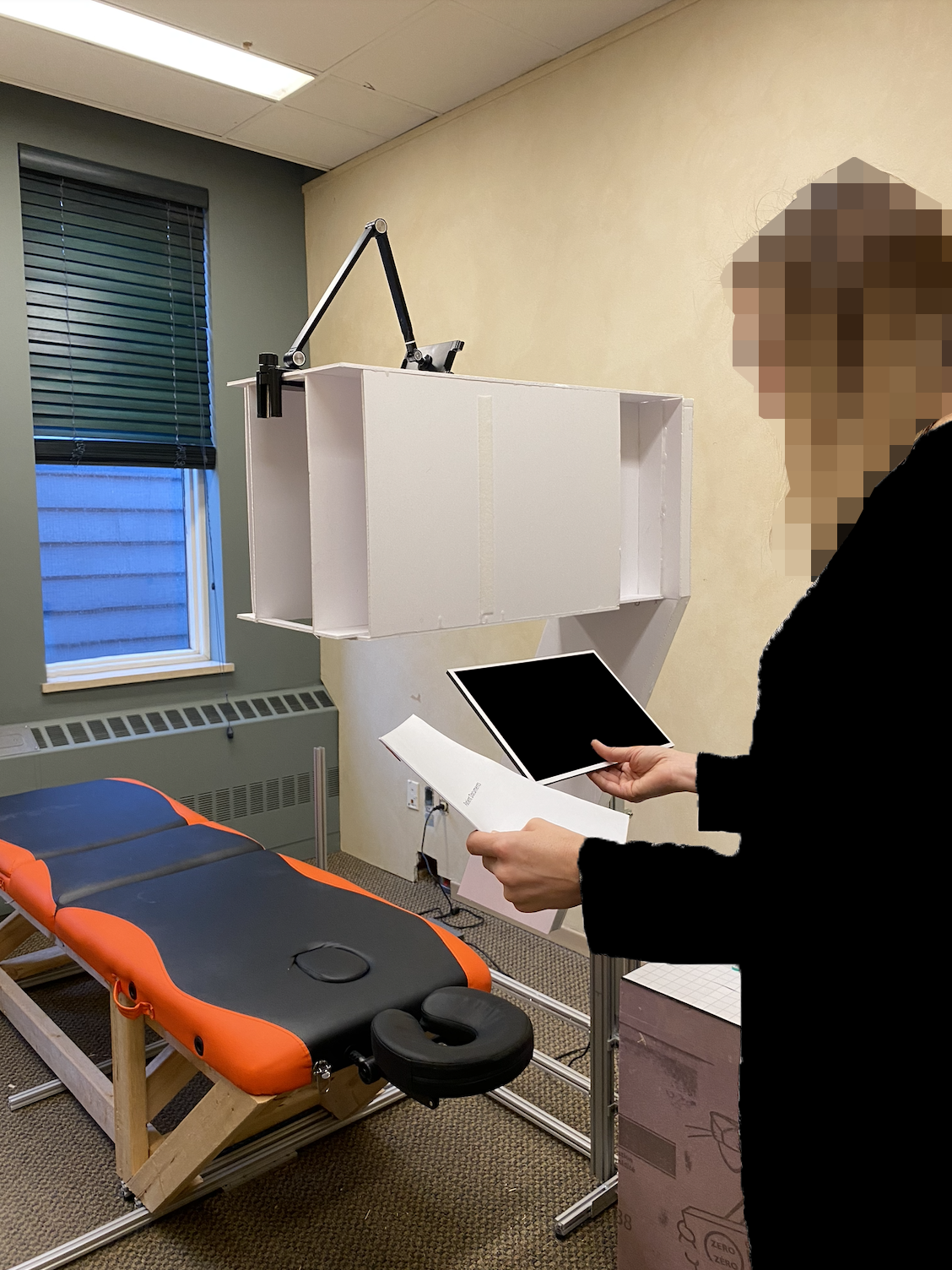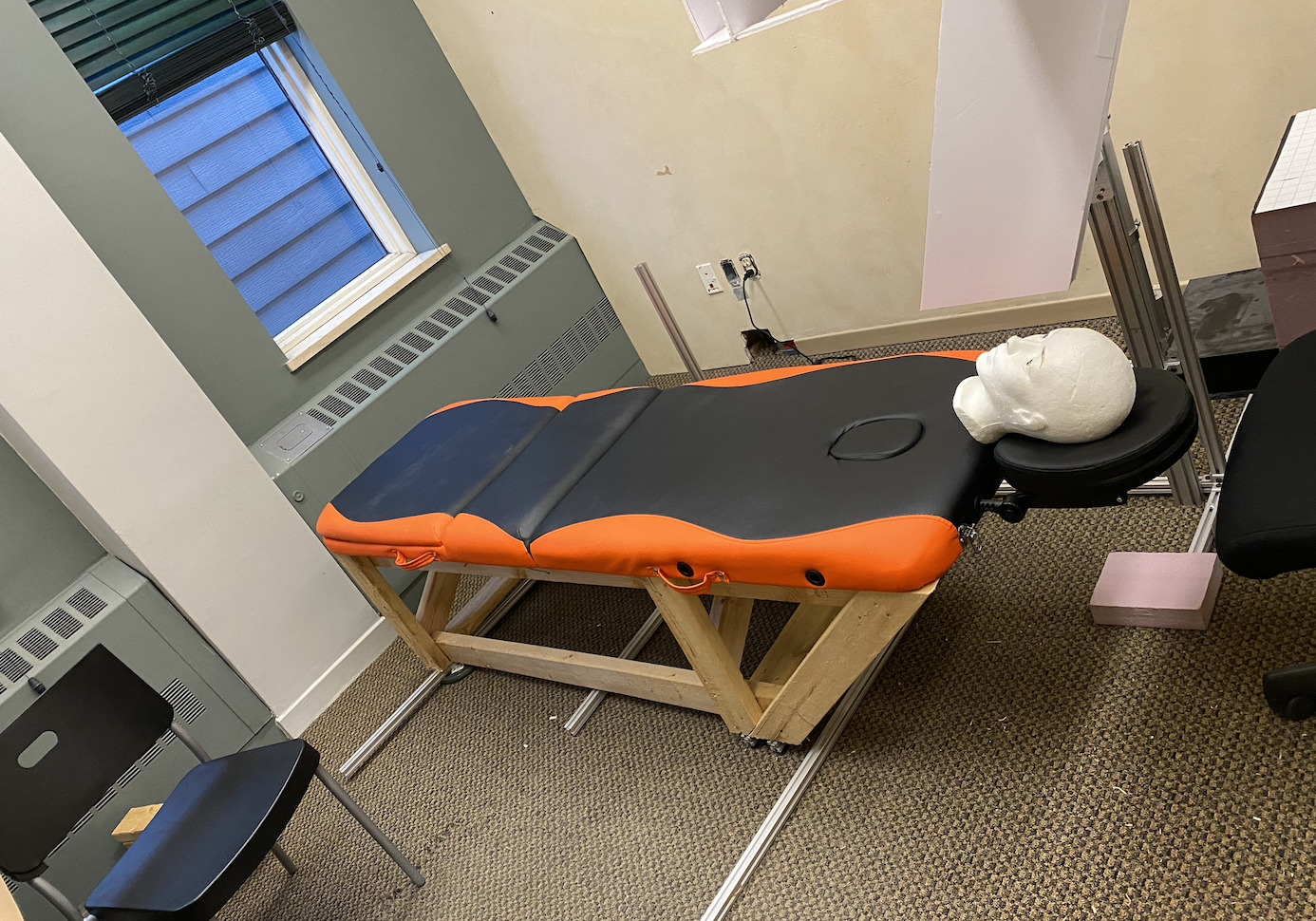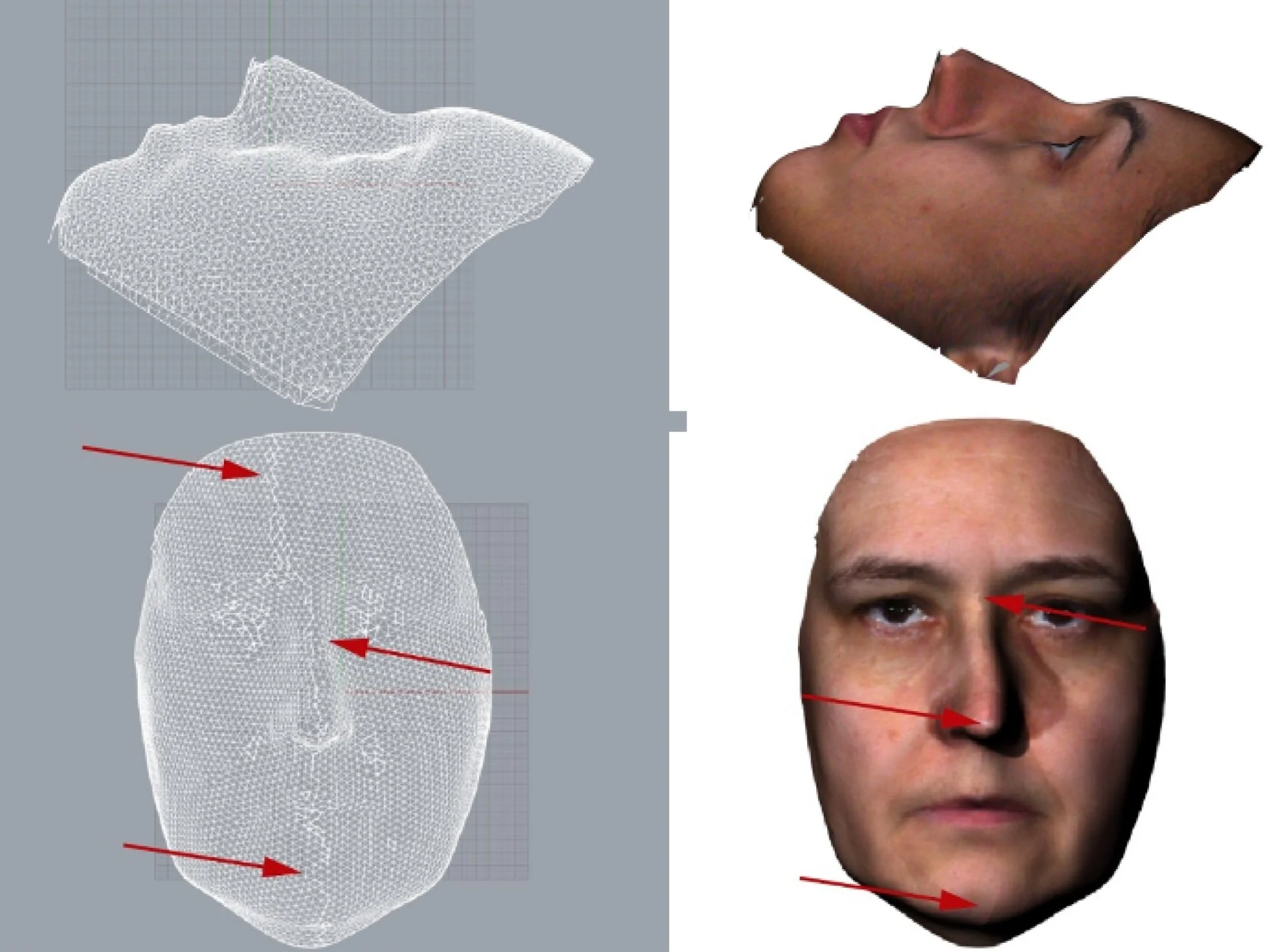While working at StarFish Medical, I worked on a medical device, a laser eye surgery system that changes the perceived colour of the eye. I designed, planned, and conducted a formative evaluation of the physical system and graphic user interface (GUI) for early usability. Anthropometric research was also conducted to aid in engineering efforts. Results of this research were included in regulatory submission documents.
Device Overview: Laser eye-surgery system, including gantry, user interface screen, patient bed, and console.
Strōma Laser System
StarFish Medical
Formative Overview
During the development phase, the team needed a better understanding of how much space users needed while using the system to perform certain tasks, and where the best locations for various device components should be on the gantry system. A formative study was conducted internally, to identify this information as well as collect various other information for the UX team, and mechanical, software and optical engineering teams.
Responsibilities
Designed, planned, and executed a formative study for client, & documented findings in a final report and presentation.
Worked with mechanical and optical systems engineering teams to design and build gantry mockup, ensuring safety of participants and accuracy to early product vision.
Organized and ran formative usability study with members of office, who represented the general population of users, similar to intended users of device.
Discoveries
Not enough headroom in prototype for Ophthalmologist activities.
Adjustable GUI was desirable, as many Doctors share operating suites and have different setup preferences.
Procedure accessories (eye drops, speculum, etc.) need to be in reaching distance of Doctor, without having to look up for them.
An angled gantry head could improve patient access.
Procedure accessories (speculum, eyedrops, gantry joystick) position changed based on participant preferences, and anthropometrics.
Gantry head interrupts view of patient's face.
Anthropometric Research Activities
Goal 1: Determine if gantry proximity to patient face was adequate in current design. Laser was housed in the gantry, and the laser needed to be a specific distance from patients cornea. This research was to identify the minimum distance for laser travel.
Method: Used 100+ Rhino 3D scanned models of human faces to measure average distance between the tip of the nose to the top of the cornea.
Encountered problem: Flaws in the model mesh indicated potential data inaccuracy. To determine scale/proportion accuracy, additional measurements were taken & compared to a published anthropometric dataset. these included:
Outer eye measurement
Inner eye measurement
Nose Width
Lip Width
Results: Data collected from the mesh models and scan verification was accurate, which saved client time and money as they did not have to conduct a study to collect this anthropometric data (and scans of patients faces) themselves. Results of this led to the determination that the current design of the laser system was adequate. This research effort prevented the re-design of the internal laser system and software organization.
Goal 2: Various iris dimensions required for optical engineering use.
Method: Sourced and reviewed existing AS-OCT scans from published peer-reviewed materials, identified the scale of the scan, assessed patients eye and overall health (had to be healthy), assessed testing conditions (if eyedrops were used, amount of light in room when scan was taken, etc.), and more. Determined variables affecting iris dimensions that had device effectiveness implications.
Results: Findings indicated a full scale study of AS-OCT scans of healthy individuals’ eyes was required by client, to ensure safety and effectiveness of device design.
AS-OCT scan with dimensions and scale.










